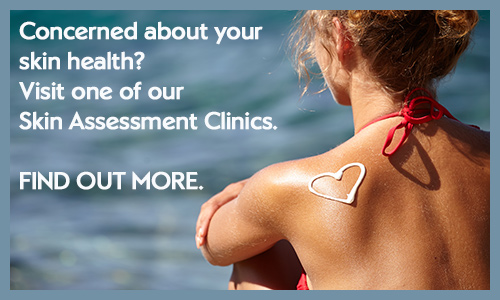Have you been getting sun protection wrong all along?
- Overview
Spending time in the sun is great for mental wellbeing, but it’s essential to respect the sun’s power and protect your skin properly. Here's what you need to know.
UVA and UVB
Ultraviolet radiation (UV) damages the skin’s cellular DNA, which can cause both short-term and long-term damage. UVA and UVB are the two kinds of UV ray that can damage our skin and can cause cancer. But many sunscreens only protect you from UVB radiation and SPF (skin protection factor) only tells you how well the cream will protect you from UVB light.
To make sure you're protected from both UVA and UVB check the bottle for a star rating, which is the measure of UVA protection, as well as the SPF rating. Three to five stars will protect you sufficiently. You can also look for the term ‘broad spectrum’ which means the sunscreen protects from both UVA and UVB.
How to apply sunscreen
Sun damage can affect any bit of skin, so make sure you use sunscreen on all exposed skin. Put it on before you get dressed in the morning so that you don’t miss any bits. Don’t forget the tops of your ears, back of your hands and your hair parting if you have one.
How often should you reapply sunscreen?
All sunscreens can rub off and and even if they claim to be waterproof, most won’t resist the rubbing from your towel when you dry yourself. So as a rule, reapply after every dip in the water, after playing sports or sweating and at a minimum every two hours. Prominent features like noses, brows, ears and cheek bones may need more regular application.
What factor sunscreen should I use?
The higher the factor, the greater the protection from UVB rays as long as you follow the above advice. It may be tempting to use a lower factor to achieve a tan, but in reality this will only damage your skin and could lead to burning. If your skin hasn't seen the sun in a while it's important that you use a high factor (40 to 50), which can be reduced to 30 after a week.
Children over 6 months should always wear factor 50 as their skin is much more delicate than an adults, and more vulnerable to burning. Children under 6 months should be kept out of direct sunlight.
A UVA protection factor of three to five stars will provide adequate protection from UVA rays.
Wear sunscreen even if you cover up
Many people think they don't have to wear sunscreen if they are covered up in clothes. In fact, many fabrics will not protect you from the sun's rays. UPF is a rating of sun protection for clothing and other fabrics. Lighter fabrics, which are more popular in sunny months typically have a lower UPF rating, and are less protective than heavier fabrics. So it's important that you apply sunscreen even if you cover up.
Last updated Tuesday 5 July 2022
First published on Friday 6 May 2016


